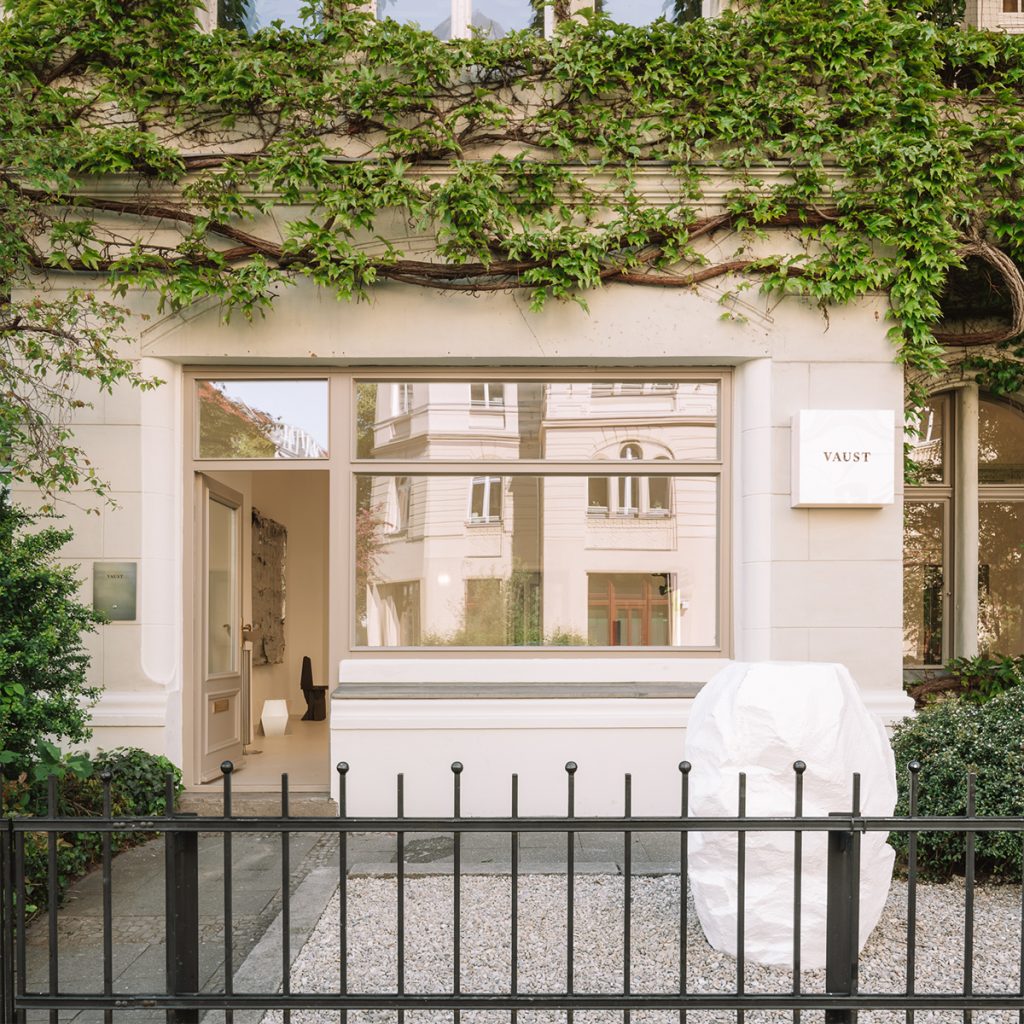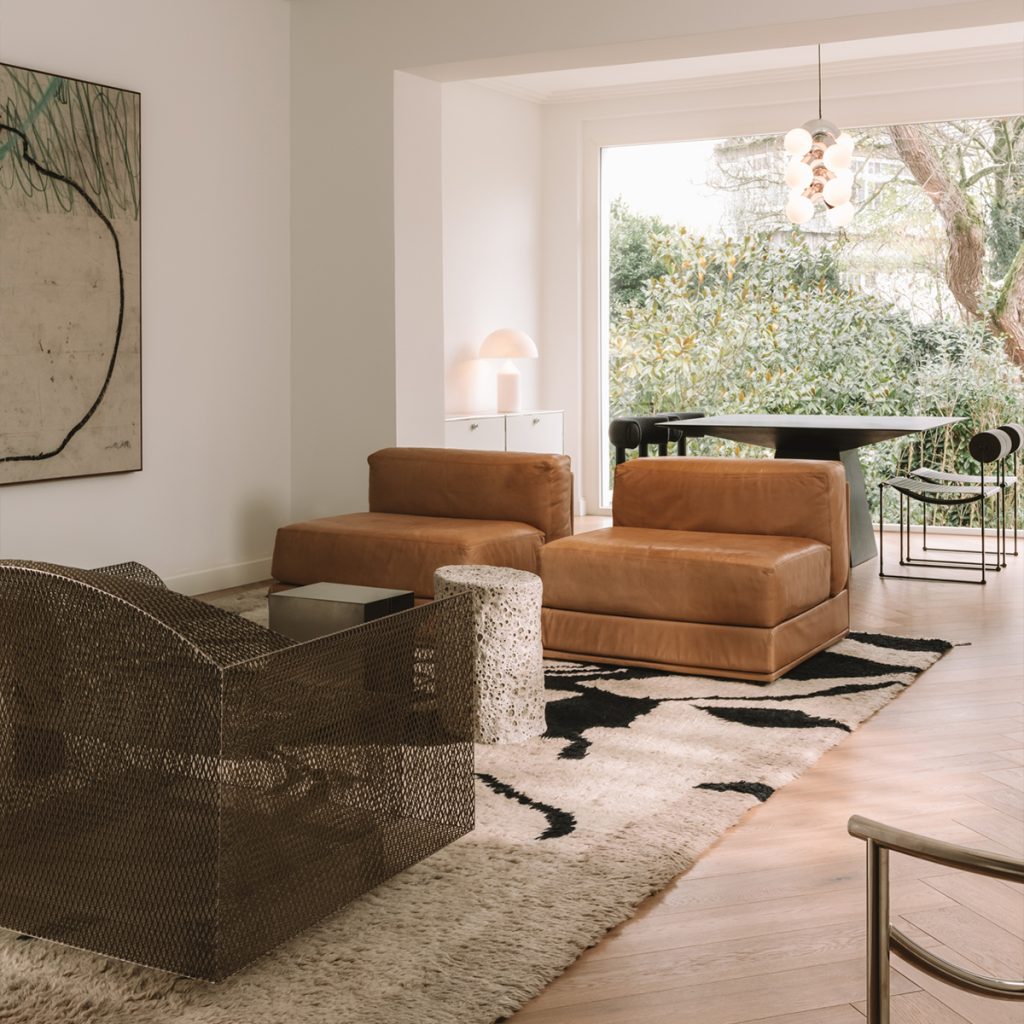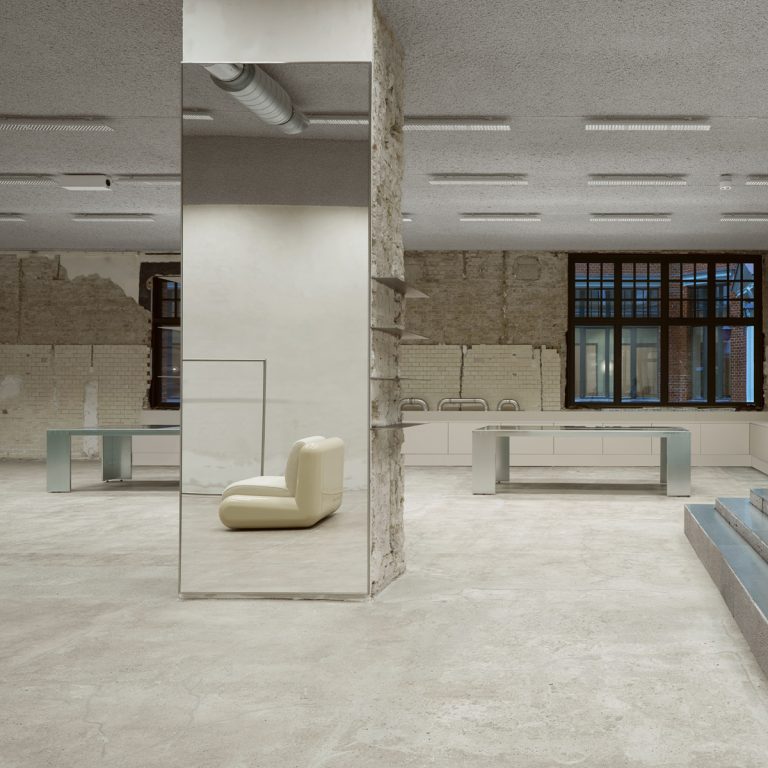
Studio & Gallery Space
Photography by CLEMENS POLOCZEK

S24 Apartment
Photography by CLEMENS POLOCZEK
Can raw concrete tell a story? For Joern Scheipers and David Kosock, co-founders of Berlin’s VAUST, the answer is a resounding yes. With a deep connection to Berlin’s architectural history, Joern and David use rough materials like concrete and stone to create spaces that feel both timeless and strikingly modern. VAUST’s approach isn’t just about aesthetics – it’s about blending art, design, and architecture all together. Whether it’s a retail store or a restaurant, VAUST designs with the intention of making you feel something visceral, transforming everyday environments into boldness.
hube: VAUST has a distinct brutalist and minimalist aesthetic. How do you approach balancing these elements in your designs to create spaces that are both functional and visually striking?
Joern Scheipers and David Kosock: The key is our focus on materials from the very beginning. We try to achieve a certain contrast or duality in materials, which creates balance. There are no strict rules when we design – we question the materials and the room, again and again, until we find a subjective balance. It’s not about following a formula; it’s about sensitivity to the space. This is what defines our brutalist and minimalist aesthetic.
h: Does this aesthetic come naturally to you, or do you find it challenging to achieve?
JS and DK: It’s not something we consciously aim for. We don’t sit down and say, ‘Let’s design a striking space’. It’s more of a natural result, something we would call our handwriting. It’s difficult to teach because it’s so personal and subjective. There are so many different approaches to interior design, like asking a chef how to make the perfect bolognese – there are lots of ways to get it right.
h: Considering the foundations of your work, how do you perceive the relationship between architecture and time? Do you think that the essence of a design should evolve with cultural and societal changes, or should it stand as a timeless artefact unaffected by temporal shifts?
JS and DK: That really depends on the project and the client. For retail spaces, for example, designs might be trend-based because it’s a fast-moving market. Those spaces are meant to change frequently. But for residential projects, designs tend to be more profound, something that lasts longer. So, the relationship between architecture and design can shift depending on the context. When it’s retail, the design will change as trends do. In a home, it might be more about creating something lasting.

